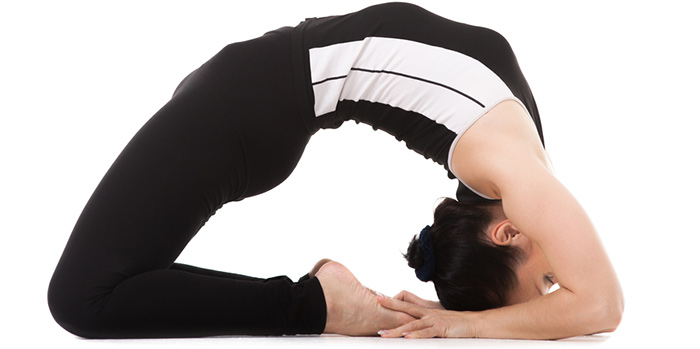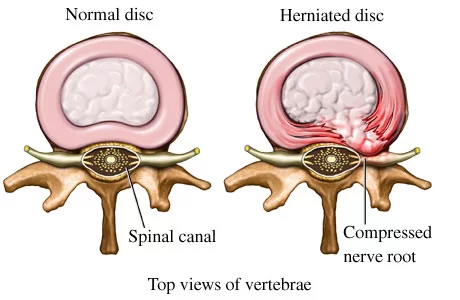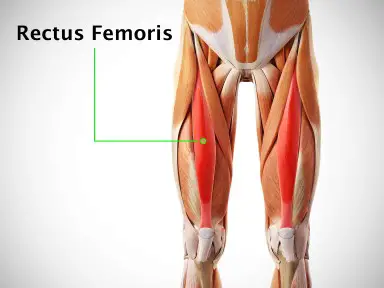Benefits Of Kegel Exercises
Table of Contents
Introduction
An exercise for strengthening the pelvic floor muscles, supporting the pelvic organs, and assisting with gas, stool, and urine incontinence is the kegel (pronounced kee-gull). Although there’s not much scientific proof, some medical professionals think it may also increase the pleasure of sex.
- Kegel exercises can help with bowel and bladder function as well as strengthening your pelvic floor muscles.
- The muscles of the pelvic floor are present in all people and support the uterus, bladder, and bowels.
- Your pelvic floor muscles may be weaker if you recently gave birth, experienced menopause, or had surgery involving the bladder and reproductive organs, such as a prostatectomy, hysterectomy, or gender confirmation procedure.
- This could then have an impact on how well your bladder and bowel function.
- Kegel exercises are specifically designed to contract and relax the muscles in the pelvic floor that are impacted by weakening in that area.
- When carried out properly, they could help control the bowels and stop bladder leaks.
- Read on for professional guidance on how to do kegel exercises correctly, who should try them, and any potential risks.
- Kegel exercises, which are basic clench-and-release motions, can help strengthen the muscles in your pelvic floor.
- Your pelvis is the area between your hips that contains your reproductive organs.
- Actually, the pelvic floor is a network of muscles and tissues that form a sling or hammock at the base of your pelvis.
- Your organs stay in place thanks to this sling.
- One of the issues that could arise from a weak pelvic floor is the inability to control your intestines or bladder.
- Easy to execute, Kegel exercises can be done anytime, anywhere—in the comfort of your own home, while waiting in queue at the bank, for example.
Why do Kegel exercises?
- Men and women can both benefit from doing kegel exercises.
- Women’s pelvic floors might become weaker due to a variety of circumstances, including childbirth, aging, and weight increase.
- The womb, the bladder, and the bowels are supported by the muscles of the pelvic floor.
- These pelvic organs may descend into a woman’s vagina if her muscles are weak.
- In addition to being incredibly unpleasant, this may result in incontinence.
- As they age, men may also notice a weakening of their pelvic floor muscles.
- This can lead to incontinence of both urine and feces, especially if the male has had prostate surgery.
Who Should Try Kegel Exercises?
Although kegel exercises are beneficial for both men and women, there are particular categories of people who should try them out:
- Pregnant people: States that kegel exercises are beneficial for pregnant women and that those who follow this advice have an “over 60% lower chance of experiencing urinary incontinence in late pregnancy compared to those who do not.” Additionally, stronger pelvic floor muscles may be able to stop perineal tears during vaginal delivery.
- Postpartum people: After you have a kid, continue performing those kegels for bladder control. The proven treatment for postpartum urine incontinence is strengthening the pelvic floor muscles using kegel exercises. A pelvic floor therapist should be consulted by the majority of postpartum women eight to twelve weeks after giving birth.
- People in menopause: Not only can menopause cause leakage of urine, but it can also cause vaginal laxity or vaginal tightness, a condition known as vaginismus.”It has been demonstrated that Kegel exercises enhance sexual function in menopausal women.”Before beginning any pelvic floor exercises, consult with a pelvic floor physical therapist if you have vaginismus to avoid unintentionally tightening those muscles even more. Kegel exercises are not always the best course of action for people experiencing pain during sexual activity related to menopause; therefore, before doing them, individuals should speak with a pelvic floor therapist.
- Post-operative individuals: Men can benefit from kegel exercises by strengthening their pelvic floor muscles following surgery to remove their bladder or prostate. Transgender women who have had genital surgery to achieve gender affirmation can reap the same benefits. Up to 33% of transgender women experience stress urine incontinence following vaginoplasty. The paper states that the construction of a new vagina may cause pelvic floor disturbance, which could lead to bowel and urine incontinence. By considerably lowering pelvic floor dysfunction, pelvic floor exercises, and physical therapy might enhance symptoms and quality of life for this population.
Finding the pelvic floor muscles in women
- It could be challenging to identify the correct group of muscles when you’re initially starting Kegel exercises.
- Putting a clean finger inside your vagina and tensing the muscles surrounding it is one method to locate them.
- Try to halt the flow of pee in order to identify the muscles.
- The pelvic floor muscles are the ones you employ for this movement.
- Learn to tolerate the sensation of them contracting and relaxing.
- This approach should only be used for educational purposes, though.
- Regularly starting and stopping your urination or performing Kegel exercises when your bladder is full are not recommended practices.
- An incomplete bladder emptying can increase your risk of UTIs, or urinary tract infections.
- In case you are still uncertain about selecting the appropriate muscles, consult your gynecologist.
- They might advise utilizing a device known as a vaginal cone.
- Your pelvic floor muscles are used to hold a vaginal cone in place once it has been inserted.
- Your pelvic floor muscles can be identified and isolated with the aid of biofeedback training.
- In this treatment, a doctor will introduce a small probe into your vagina or apply adhesive electrodes on the outside of your vagina or anus.
- They’ll ask you to attempt a Kegel.
- Your ability to contract the right muscles and maintain the contraction for a given amount of time will be displayed on a monitor.
Finding the pelvic floor muscles in men
- Identifying the correct set of pelvic floor muscles is a common problem that affects men as well.
- Men can locate them by sticking a finger into their rectum and attempting to squeeze it without contracting their thighs, buttocks, or belly muscles.
- Tensing the muscles that prevent you from passing gas is another useful tip.
- Try halting the pee flow if you’re still having problems. Similar to women, this is a dependable method for locating the pelvic floor muscles, but it shouldn’t be used frequently.
- Men can also find the pelvic floor muscles with the aid of biofeedback.
- You might want to schedule a visit with your doctor if you’re experiencing problems finding them on your own.
Benefits of Kegel Exercises
In addition to helping to prevent postpartum urine leaks, Kegel exercises can be beneficial for men.
Kegel Exercises for Women
- Women can prevent pelvic floor problems at different stages of the reproductive life cycle by doing kegel exercises.
- Pregnancy and childbirth may have an adverse effect on the structures of the pelvic floor, which may lead to the development of pelvic organ prolapse a bulging or displacement of that organ, and incontinence.
- Stronger pelvic floor muscles can better support the weight of the fetus during pregnancy and assist regulate involuntary urine loss.
- This benefit of bladder control can also be felt during the postpartum phase.
- According to the North American Menopause Society, incontinence can also be a problem for women in menopause and beyond due to weak pelvic floor muscles.
- This might involve urine leaking during intercourse, coughing, sneezing, laughing, or coughing.
- In order to stop any leaks, pelvic floor exercises may be helpful.
Kegel Exercises for Men
- Men can benefit most from Kegel exercises in a postoperative context.
- There is still a considerable chance of postoperative urine incontinence for men who have prostatectomy surgery to treat prostate cancer.
- It has been demonstrated that treating incontinence in these male patients with pelvic floor muscle training and kegel exercises improves their quality of life.
- Men over the age of 18 who perform Kegel exercises report improved sexual function.
- A 2019 study discovered that treating erectile dysfunction and premature ejaculation with frequent pelvic floor muscle exercise may be a helpful non-pharmaceutical option.
Kegel Exercise Risks
- Kegel exercises carry some hazards, including the possibility of conducting pelvic floor contractions while peeing.
- A bladder infection may result from stopping midstream urination because the bladder does not empty completely, as per the National Institute of Diabetes and Digestive and Kidney Diseases.
- Additionally, be careful if you have a vagina and are practicing kegels.
- Excessive power during these exercises may cause the vaginal muscles to become excessively tight, which may cause pain during penetrating sex.
When Not to Try Kegel Exercises
- Kegel exercises are generally safe to perform during pregnancy, but they shouldn’t be done any closer to delivery, beyond about 32 weeks.
- The baby’s head position starts to change around the 30-week mark of pregnancy in order to prepare for birth, and by 34 or 36 weeks, the baby’s head is usually down and ready for delivery.
- You should then cease performing kegel exercises.
- A pelvic floor that is overly tight should not impede the body’s normal process of preparing for a vaginal birth. This could cause the vagina to tear excessively when the baby is born.
- Another case in which you should take caution when conducting kegel exercises is if you have chronic pelvic pain, such as endometriosis.
- Excessive tightness and tension may amplify pain receptors in the pelvic floor region.
- Instead of strengthening the pelvic floor muscles, you may need help extending the pelvic floor muscles, and a pelvic floor physical therapist would be the ideal person to treat that, according to.
- Kegel exercises are also not recommended for people with a lengthy history of anxiety or TMJ because these people typically have hypertonic pelvic floors.
Conclusion
Kegel exercises can significantly strengthen your inner strength and improve your pelvic health and general well-being when performed on a regular basis. Who would have guessed that a seemingly insignificant habit could have such significant advantages?
Regular Kegel exercises can not only improve the condition of your pelvic floor but also open up a world of unanticipated benefits for you. The benefits are genuinely amazing, ranging from better bladder and bowel control to enhanced intimacy and core stability.
FAQ
An exercise for strengthening the pelvic floor muscles, supporting the pelvic organs, and assisting with gas, stool, and urine incontinence is the kegel (pronounced kee-gull). Although there’s not much scientific proof, some medical professionals think it may also increase the pleasure of sex.
Through targeted exercises, pelvic floor physical therapy can assist people in regaining control over these functions. Therapy can help with problems like bowel irregularities and urine frequency, urgency, hesitancy, and leakage by enhancing muscular tone and coordination.
Action mechanism
Kegel exercises work to strengthen the pelvic floor’s pubococcygeus muscles, which in turn improves muscle tone. To prepare the pelvic floor for the physiological pressures of the later stages of pregnancy and childbirth, pregnant women are often prescribed to perform Kegel exercises.
Kegel exercises help manage many pelvic floor issues, including urine incontinence. This is a comprehensive guide on how to do Kegel exercises correctly. The pelvic floor muscles, which support the bladder, small intestine, rectum, and uterus, are strengthened with Kegel exercises.
Kegel exercises are commonly performed in various positions. An upright position on an exercise ball is commonly used. You can use a towel roll or not for this. Other popular postures include lying on your stomach, side, or back.
Within a few weeks to a few months, if you perform your Kegel exercises regularly, you should see effects (such as less frequent pee leakage). Make Kegel exercises a daily routine to get the long-term benefits.
References
- Professional, C. C. M. (n.d.). Kegel Exercises. Cleveland Clinic. https://my.clevelandclinic.org/health/articles/14611-kegel-exercises
- Stang, D. (2018, September 17). Kegel Exercises. Healthline. https://www.healthline.com/health/kegel-exercises
- D. (2019, December 6). Kegel exercises and their benefits. https://www.practo.com/healthfeed/kegel-exercises-and-its-benefits-39855/post







